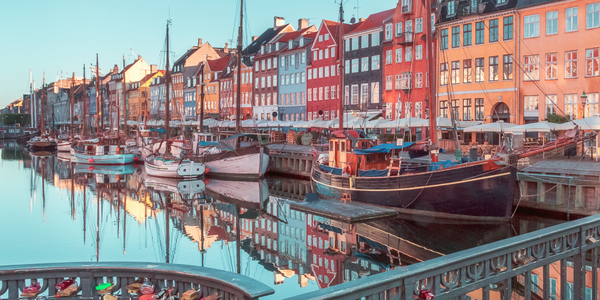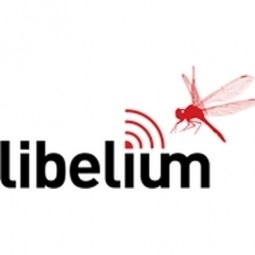下载PDF
Enhancing Environmental Control and Reducing Emissions in Nordic Smart Cities

技术
- 分析与建模 - 大数据分析
- 网络与连接 - 网关
- 网络与连接 - 洛拉
- 传感器 - 气体传感器
适用行业
- 城市与自治市
用例
- 连续排放监测系统
挑战
市政当局和公共机构关注城市的空气、水、噪音或照明污染。在过去的几年里,通过一些国际法规,减少可能影响环境和居民生活的排放已经成为强制性的。成为智慧城市不仅仅是一种趋势,更是对社会和利益相关者的承诺。碳追踪和追踪项目 (CTT) 的目标是减少二氧化碳排放,应对城市的气候变化,并为城市温室气体 (GHG) 排放监测开发决策支持系统。它由欧盟气候 KIC 计划的低碳城市实验室旗舰项目资助。
客户
特隆赫姆(挪威)和瓦伊勒(丹麦)
关于客户
特隆赫姆(挪威)和瓦伊勒(丹麦)
解决方案
挪威科技大学 (NTNU) 领导了这个基于无线传感器网络和 Libelium Waspmote 传感器平台的项目。智慧城市计划已部署在两个北欧城市作为试验台:特隆赫姆(挪威)和韦伊勒(丹麦)。 CTT 项目的第一阶段揭示了挪威市政当局当前的方法与温室气体排放 (GHG) 监测和报告的官方标准之间的巨大差距。这种差异也在全球城市中被发现。当前阶段,CTT 2.0,通过使用自下而上的基于传感器的测量,专注于开发用于温室气体排放监测和报告的自动化系统。技术人员选择了 Libelium 开源硬件和传感器技术来开发这个实时监控系统。推动因素如下: • 易于使用 • 校准传感器的可用性 • 与 LoRaWAN 的兼容性 • 该技术的防风雨外壳 • 易于部署的封装版本 部署在 Trondheim 和 Vejle 的无线传感器网络基于 Plug & Sense! Smart Environment PRO,该平台具有最高性能的计量传感器,需要精确的 ppm 或百分比,并且能够读取多达 16 个气体传感器。对于此部署,安装的传感器有:二氧化碳 (CO)、一氧化氮 (NO)、颗粒物 - 灰尘(PM1、PM2.5 和 PM10)、温度、压力和湿度。 Waspmote Plug & Sense 之间的通信!节点和网关通过 LoRaWAN 完成,而网关通过通用以太网布线与云通信。 CTT2.0 目前使用 The Things Network 作为云后端,这是一个开源社区,旨在创建基于 LoRaWAN 的全球物联网网络。开发用于可视化数据的应用程序是 CTT Urban Overview,它允许监控网络本身以及数据分析。数据取自传感器节点以及外部信息源,用于分析和校准测量结果,并将它们合并以构建城市排放的详细概览。 Trondheim 和 Vejle 希望获得一个平台来可视化信息并允许分析测量数据。这些有价值的信息有助于实时了解气体排放和污染水平,以符合环境法规并获得有关缓解行动的反馈。 “TCTT Urban Overview 从部署在 Vejlehe 的节点提供信息 CTT2.0 的主要目标是为城市提供温室气体排放监测和报告的自动化系统,并要求直接反馈城市的减排举措。因此,伴随的目标是将 CTT2.0 集成到城市的决策支持系统中”,CTT 项目的技术经理 Fredrik Anthonisen 肯定地说。该项目希望为市政当局和公共机构提供一个开放系统,让居民了解他们所在城市与温室气体和污染有关的情况。该平台不仅为公民提供开放数据,还为研究机构或公司开发其他项目提供开放数据。
相关案例.

Case Study
Turning A Stadium Into A Smart Building
Honeywell created what it called the “intelligent system” for the National Stadium in Beijing, China, turning the venue for the opening and closing events at the 2008 Summer Olympics into a “smart building.” Designed by highly controversial artist Ai Weiwei, the “Bird’s Nest” remains one of the most impressive feats of stadium architecture in the world. The 250,000 square meter structure housed more than 100,000 athletes and spectators at a time. To accommodate such capacity, China turned to Honeywell’s EBI Integrated Building Management System to create an integrated “intelligent system” for improved building security, safety and energy efficiency.
.png)
Case Study
Smart Street Light Network (Copenhagen)
Key stakeholders are taking a comprehensive approach to rethinking smart city innovation. City leaders have collaborated through partnerships involving government, research institutions and solution providers. The Copenhagen Solutions Lab is one of the leading organizations at the forefront of this movement. By bringing together manufacturers with municipal buyers, the Copenhagen Solutions Lab has catalyzed the development and deployment of next-generation smart city innovations. Copenhagen is leveraging this unique approach to accelerate the implementation of smart city solutions. One of the primary focus areas is LED street lighting.

Case Study
Buoy Status Monitoring with LoRa
The Netherlands are well-known for their inland waterways, canals, sluices and of course port activities. The Dutch Ministry of Infrastructure indicates that there are thousands of buoys and fixed items in and near water environments that would profit from IoT monitoring. One of the problems with buoys for example, is that they get hit by ships and the anchor cable breaks. Without connectivity, it takes quite some time to find out that something has happened with that buoy. Not to mention the costs of renting a boat to go to the buoy to fix it. Another important issue, is that there is no real-time monitoring of the buoys at this moment. Only by physically visiting the object on the water, one gains insight in its status.

Case Study
China Mobile Smart Parking
Smart Parking, powered by NB-IoT technology, is making it easier for drivers to find free parking spots. Cities can better manage their parking assets and maximize the revenue available to them as a result. Drivers searching for parking create congestion and pollution by circling and hunting for available parking. Smart Parking services are able to significantly ease these problems by guiding a driver directly to a parking space.

Case Study
Barcelona Case Study
Barcelona’s heavy traffic and its associated high levels of pollution were the primary factors that motivated some companies and universities to work on strategies for improving traffic in the city centre. Bitcarrier is one of the technologies involved in the In4Mo Project, whose main objective is to develop the applications that form the core of smart mobility, one of the fundamental pillars of the smart city concept.






